登録情報 データベース : EMDB / ID : EMD-27806タイトル GR89,696 bound Kappa Opioid Receptor in complex with gustducin deep sharp 複合体 : GR89,696 bound Kappa Opioid Receptor in complex with gustducinタンパク質・ペプチド : Kappa-type opioid receptorタンパク質・ペプチド : G alpha gustducin proteinタンパク質・ペプチド : Guanine nucleotide-binding protein G(I)/G(S)/G(T) subunit beta-1タンパク質・ペプチド : Guanine nucleotide-binding protein G(I)/G(S)/G(O) subunit gamma-2タンパク質・ペプチド : ScFv16 proteinリガンド : methyl (3R)-4-[(3,4-dichlorophenyl)acetyl]-3-[(pyrrolidin-1-yl)methyl]piperazine-1-carboxylate / / / 機能・相同性 分子機能 ドメイン・相同性 構成要素
/ / / / / / / / / / / / / / / / / / / / / / / / / / / / / / / / / / / / / / / / / / / / / / / / / / / / / / / / / / / / / / / / / / / / / / / / / / / / / / / / / / / / / / / / / / / / / / / / / / / / / / / / / / / / / / / / / / / / / / / / / / / / / / / / / / / / / / / / / / / / / / / / / 生物種 Homo sapiens (ヒト) / Mus musculus (ハツカネズミ)手法 / / 解像度 : 2.61 Å Fay JF / Che T 資金援助 Organization Grant number 国 National Institutes of Health/National Institute of General Medical Sciences (NIH/NIGMS) GM143061
ジャーナル : Nature / 年 : 2023タイトル : Ligand and G-protein selectivity in the κ-opioid receptor.著者: Jianming Han / Jingying Zhang / Antonina L Nazarova / Sarah M Bernhard / Brian E Krumm / Lei Zhao / Jordy Homing Lam / Vipin A Rangari / Susruta Majumdar / David E Nichols / Vsevolod Katritch ... 著者 : Jianming Han / Jingying Zhang / Antonina L Nazarova / Sarah M Bernhard / Brian E Krumm / Lei Zhao / Jordy Homing Lam / Vipin A Rangari / Susruta Majumdar / David E Nichols / Vsevolod Katritch / Peng Yuan / Jonathan F Fay / Tao Che / 要旨 : The κ-opioid receptor (KOR) represents a highly desirable therapeutic target for treating not only pain but also addiction and affective disorders. However, the development of KOR analgesics has ... The κ-opioid receptor (KOR) represents a highly desirable therapeutic target for treating not only pain but also addiction and affective disorders. However, the development of KOR analgesics has been hindered by the associated hallucinogenic side effects. The initiation of KOR signalling requires the G-family proteins including the conventional (G, G, G, G and G) and nonconventional (G and G) subtypes. How hallucinogens exert their actions through KOR and how KOR determines G-protein subtype selectivity are not well understood. Here we determined the active-state structures of KOR in a complex with multiple G-protein heterotrimers-G, G, G and G-using cryo-electron microscopy. The KOR-G-protein complexes are bound to hallucinogenic salvinorins or highly selective KOR agonists. Comparisons of these structures reveal molecular determinants critical for KOR-G-protein interactions as well as key elements governing G-family subtype selectivity and KOR ligand selectivity. Furthermore, the four G-protein subtypes display an intrinsically different binding affinity and allosteric activity on agonist binding at KOR. These results provide insights into the actions of opioids and G-protein-coupling specificity at KOR and establish a foundation to examine the therapeutic potential of pathway-selective agonists of KOR. 履歴 登録 2022年8月8日 - ヘッダ(付随情報) 公開 2023年5月3日 - マップ公開 2023年5月3日 - 更新 2023年5月31日 - 現状 2023年5月31日 処理サイト : RCSB / 状態 : 公開
すべて表示 表示を減らす
 データを開く
データを開く 基本情報
基本情報
 マップデータ
マップデータ 試料
試料 キーワード
キーワード 機能・相同性情報
機能・相同性情報 Homo sapiens (ヒト) /
Homo sapiens (ヒト) / 
 データ登録者
データ登録者 米国, 1件
米国, 1件  引用
引用 ジャーナル: Nature / 年: 2023
ジャーナル: Nature / 年: 2023
 構造の表示
構造の表示 ダウンロードとリンク
ダウンロードとリンク emd_27806.map.gz
emd_27806.map.gz EMDBマップデータ形式
EMDBマップデータ形式 emd-27806-v30.xml
emd-27806-v30.xml emd-27806.xml
emd-27806.xml EMDBヘッダ
EMDBヘッダ emd_27806.png
emd_27806.png emd_27806_additional_1.map.gz
emd_27806_additional_1.map.gz emd_27806_half_map_1.map.gz
emd_27806_half_map_1.map.gz emd_27806_half_map_2.map.gz
emd_27806_half_map_2.map.gz http://ftp.pdbj.org/pub/emdb/structures/EMD-27806
http://ftp.pdbj.org/pub/emdb/structures/EMD-27806 ftp://ftp.pdbj.org/pub/emdb/structures/EMD-27806
ftp://ftp.pdbj.org/pub/emdb/structures/EMD-27806 emd_27806_validation.pdf.gz
emd_27806_validation.pdf.gz EMDB検証レポート
EMDB検証レポート emd_27806_full_validation.pdf.gz
emd_27806_full_validation.pdf.gz emd_27806_validation.xml.gz
emd_27806_validation.xml.gz emd_27806_validation.cif.gz
emd_27806_validation.cif.gz https://ftp.pdbj.org/pub/emdb/validation_reports/EMD-27806
https://ftp.pdbj.org/pub/emdb/validation_reports/EMD-27806 ftp://ftp.pdbj.org/pub/emdb/validation_reports/EMD-27806
ftp://ftp.pdbj.org/pub/emdb/validation_reports/EMD-27806 リンク
リンク EMDB (EBI/PDBe) /
EMDB (EBI/PDBe) /  EMDataResource
EMDataResource マップ
マップ ダウンロード / ファイル: emd_27806.map.gz / 形式: CCP4 / 大きさ: 91.1 MB / タイプ: IMAGE STORED AS FLOATING POINT NUMBER (4 BYTES)
ダウンロード / ファイル: emd_27806.map.gz / 形式: CCP4 / 大きさ: 91.1 MB / タイプ: IMAGE STORED AS FLOATING POINT NUMBER (4 BYTES) 試料の構成要素
試料の構成要素 Homo sapiens (ヒト)
Homo sapiens (ヒト) Homo sapiens (ヒト)
Homo sapiens (ヒト)
 Homo sapiens (ヒト)
Homo sapiens (ヒト)
 Homo sapiens (ヒト)
Homo sapiens (ヒト)
 Homo sapiens (ヒト)
Homo sapiens (ヒト)


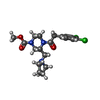
 解析
解析 試料調製
試料調製 電子顕微鏡法
電子顕微鏡法 FIELD EMISSION GUN
FIELD EMISSION GUN
 画像解析
画像解析 ムービー
ムービー コントローラー
コントローラー



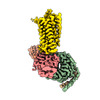
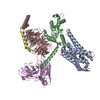







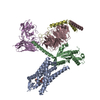

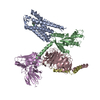

























 Z
Z Y
Y X
X

























